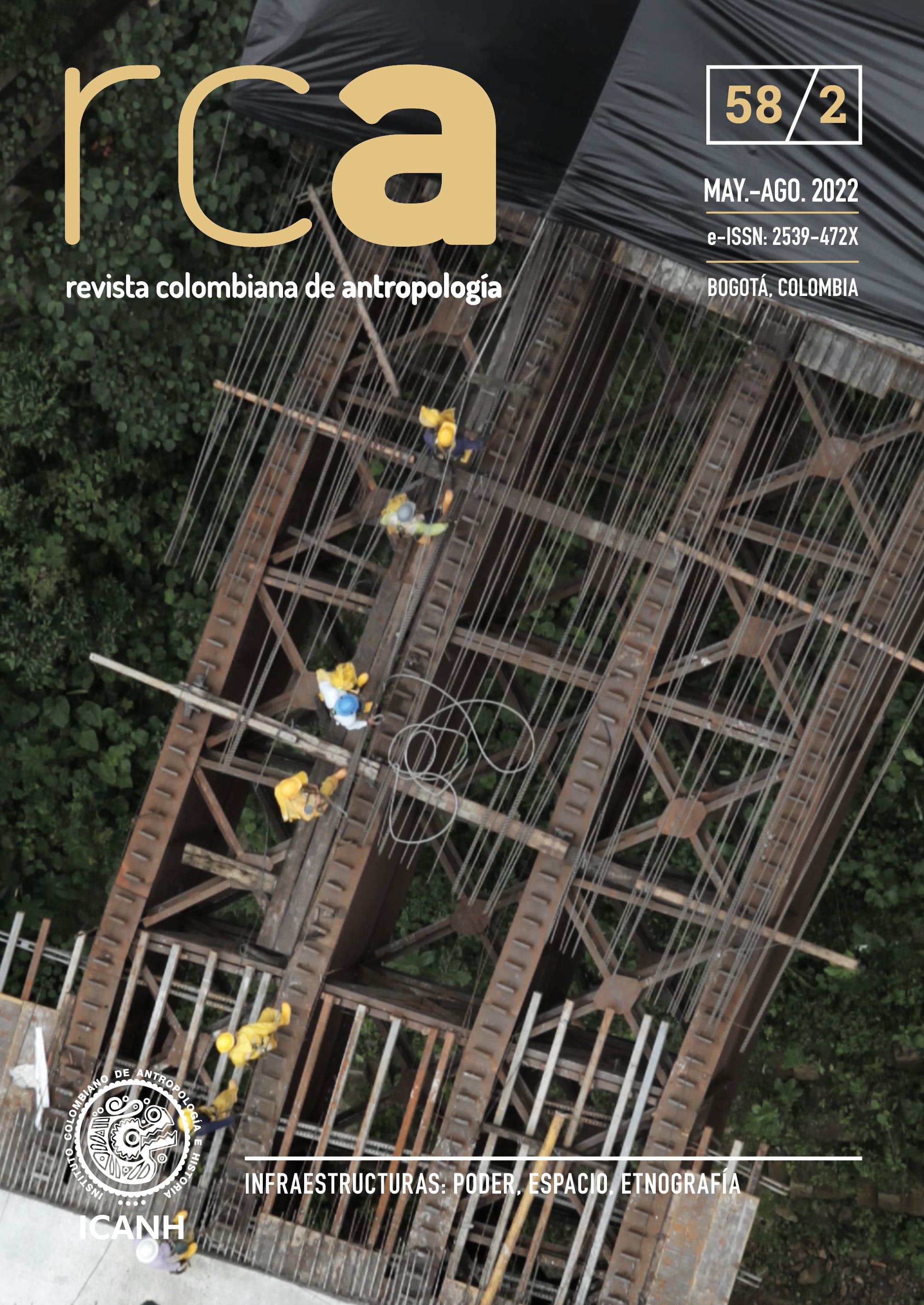Rivers as infrastructure: community management and water movements
DOI:
https://doi.org/10.22380/2539472X.2137Keywords:
rivers as infrastructure, infrastructure and anthropology, water management, water governanceAbstract
The Magdalena River evokes the long history of a river intervened by canals, cement, dredges and hydroelectric power plants. It can also be understood from the connections and movements of water that allow the flow of sediments, nutrients and ensure the connectivity of ecosystems. I seek to investigate how these two visions connect and intertwine with the analysis of the local environmental management of Riverside communities (fishermen and farmers) of the Magdalena River. On the one hand, management depends on and/or responds to the analysis of the causes and consequences of changes in water quality (pollution), its channel and available quantity, as an effect of infrastructure interventions. On the other hand, management should also be based on the movement patterns of water expansion that flood or dry out areas such as marshes and beaches, which define moments of greater or lesser flow and the presence of fish, among others. I argue that forms of riparian management are practices derived from diverse partial connections between people, animals and water movements, materialities and their multiple promises that transgress the opposition of these two perspectives of an infrastructural river.
Downloads
References
Aman, Alfred y Carol J. Greenhouse. 2017. Transnational law: cases and problems in an interconnected world. Durham: Carolina Academic Press.
Anand, Nikhil. 2017. Hydraulic city: water and the infrastructures of citizenship in Mumbai. Durham; Londres: Duke University Press.
Asociación Campesina del Valle del Río Cimitarra. 2017. “Contaminación por derrame de petróleo sobre río Magdalena”. 10 de mayo. https://prensarural.org/spip/spip.php?article21468
Benda-Beckmann, Franz von, Keebet von Benda-Beckmann y Julia M. Eckert. 2016. Rules of law and laws of ruling: on the governance of law. Londres: Routledge.
Bonil-Gómez, Katherine. 2018. “Free people of African descent and jurisdictional politics in eighteenth-century New Granada: the bogas of the Magdalena river”. Journal of Iberian and Latin American Studies 24 (2): 183-194. https://doi.org/10.1080/14701847.2018.1492324
Bowker, Geoffrey, Karen Baker, Florence Millerand y David Ribes. 2010. “Toward information infrastructure studies: ways of knowing in a networked environment”. En International handbook of Internet research, editado por Jeremy Hunsinger, Lisbeth Klastrup y Matthew Allen, 97-117. Dordrecht: Springer.
Boyer, Dominic. 2017. “Revolutionary infrastructure”. En Infrastructures and social complexity. A companion, editado por Penny Harvey, Casper Bruun Jensen y Atsuro Morita, 174-186. Londres; Nueva York: Routledge, Taylor & Francis Group.
CAM (Corporación Autónoma Regional del Alto Magdalena). 2018. “El corredor biológico Guácharos-Puracé celebró 11 años como área protegida”. 22 de noviembre. https://cam.gov.co/en/1581-el-corredor-biol%C3%B3gico-gu%C3%A1charos-purac%-C3%A9-celebr%C3%B3-11-a%C3%B1os-como-%C3%A1rea-protegida.html
Camargo, Alejandro. 2021. “Stagnation: waterflows and the politics of stranded matter in La Mojana, Colombia”. En Delta life: exploring dynamic environments where rivers meet the sea, editado por Franz Krause y Mark Harris, 83-101. Nueva York; Oxford: Berghahn Books.
Carse, Ashley. 2012. “Nature as infrastructure: making and managing the Panama canal watershed”. Social Studies of Science 42 (4): 539-563. https://doi.org/10.1177/0306312712440166
Corantioquia. 2014. “Humedales de vida. Una propuesta de transformación para la sostenibilidad del territorio”. https://www.corantioquia.gov.co/ciadoc/AGUA/AIRNR_CV_1411_103_2014.pdf
Corte Constitucional. 2016. Sentencia T-622. Derechos bioculturales del río Atrato. [M. P.: Jorge Iván Palacio Palacio]. 10 de noviembre.
Damin, Nicolás. 2014. “El Estado, la espera y la dominación política en los sectores populares: entrevista al sociólogo Javier Auyero”. Salud Colectiva 10 (3): 407-415. https://doi.org/10.18294/sc.2014.402
Dussán Calderón, Miller Armín, Planeta Paz y Asoquimbo. 2017. El Quimbo: extractivismo, despojo, ecocidio y resistencia: proyecto experiencias de referencias para la construcción del sentido de la paz territorial. Bogotá: Planeta Paz y Espacio Creativo.
Empson, Charles. 1836. Narratives of South America, illustrating manners, customs, and scenery: containing also numerous facts in natural history, collected during a four years residence in tropical regions. Londres: Printed by A. J. Valpy, Red Lion Court, Fleet Street, and published for the author by William Edwards, Ave Maria Lane.
García Otálora, Johan Mauricio y Elver Tapias Santos. 2011. “Diagnóstico ambiental de la ciénaga de Palagua, en Puerto Boyacá, Boyacá”. Tesis de grado en Administración y Gestión Ambiental, Facultad de Ciencias, Universidad Piloto de Colombia, Bogotá.
Garzón, Natalia Valentina y Juan Carlos Gutiérrez. 2013. Deterioro de humedales en el Magdalena Medio: un llamado para su conservación. Bogotá: Fundación Alma; Instituto de Investigación de Recursos Biológicos Alexander von Humboldt. http://repository.humboldt.org.co/handle/20.500.11761/31386
González Peña, Sandra Patricia. 2018. “Gobernanza ambiental en áreas destinadas a la compensación ambiental: el caso de la Central Hidroeléctrica El Quimbo”. Tesis de maestría en Conservación y Uso de Biodiversidad, Facultad de Estudios Ambientales y Rurales, Pontificia Universidad Javeriana, Bogotá.
Goodale, Mark y Sally Engle Merry. 2017. Anthropology and law: a critical introduction. Nueva York: New York University Press.
Hall, Stuart. 1997. Representation. Cultural representations and signifying practices. Londres: Sage
Harvey, Penny. 2018. “Infrastructures in and out of time: the promise of roads in contemporary Peru”. En The promise of infrastructure, editado por Nikhil Anand, AkhilGupta y Hannah Appel, 80-101. Nueva York: Duke University Press. https://doi.org/10.1515/9781478002031-005
Hetherington, Kregg. 2016. “Surveying the future perfect: anthropology, development and the promise of infrastructure”. En Infrastructures and social complexity: a companion, editado por Penny Harvey, Casper Bruun Jensen y Atsuro Morita, 40-50. Londres; Nueva York: Routledge, Taylor & Francis Group.
Hodgetts, Timothy. 2017. “Connectivity”. Environmental Humanities 9 (2): 456-459. https://doi.org/10.1215/22011919-4215412
Ideam (Instituto de Hidrología, Meteorología y Estudios Ambientales). 2018. “Agua. Modelación hidrológica”. http://www.ideam.gov.co/web/agua/modelacion-hidrologica
Instituto de Investigación de Recursos Biológicos Alexander von Humboldt y CAM (Corporación Autónoma Regional del Alto Magdalena). 2006. “Caracterización de la biodiversidad, proceso corredor biológico entre los PNN Puracé y cueva de los Guácharos (Huila), Colombia”. Repositorio Institucional de Documentación Científica del Instituto de Investigación de Recursos Biológicos Alexander von Humboldt. Bogotá. http://repository.humboldt.org.co/handle/20.500.11761/9577?locale-attribute=en
Jaramillo Villa, Úrsula, Carlos Flórez-Ayala y Jimena Cortés-Duque. 2016. Colombia anfibia. Un país de humedales. Vol. 1. Bogotá: Instituto Humboldt.
Jensen, Casper Bruun. 2010. Ontologies for developing things: making health care futures through technology. Rotterdam: Sense Publishers.
Jensen, Casper Bruun y Brit Ross Winthereik. 2013. Monitoring movements in development aid: recursive partnerships and infrastructures. Cambridge; Londres: MIT Press.
Jiménez-Segura, Luz Fernanda, Daniel Restrepo-Santamaría, Silvia López-Casas, Juliana Delgado, Mauricio Valderrama, Jonathan Álvarez y Daniel Gómez. 2014. “Ictiofauna y desarrollo del sector hidroeléctrico en la cuenca del río Magdalena-Cauca, Colombia”. Biota Colombiana 15 (2): 3-25. http://repository.humboldt.org.co/handle/20.500.11761/9452
Karasti, Helena y Jeanette Blomberg. 2018. “Studying infrastructuring ethnographically”. Computer Supported Cooperative Work (CSCW), abril. https://www.researchgate.net/publication/318758068_Studying_Infrastructuring_Ethnographically
León, Ana y Jineth Prieto. 2018. “Lo que revela el derrame de crudo en Barrancabermeja”. La Silla Vacía. https://www.lasillavacia.com/historias/silla-nacional/lo-que-revela-el-derrame-de-crudo-en-barrancabermeja/
Lockrem, Jessica y Adonia Lugo. S. f. “Infrastructure: interview with Nikhil Anand, Jonathan Bach, Julia Elyachar, and Daniel Mains”. Cultural Anthropology. https://journal.culanth.org/index.php/ca/infrastructure-anand-bach-elyachar
McGraw, Jason. 2014. The work of recognition: Caribbean Colombia and the postemancipation struggle for citizenship. Chapel Hill: University of North Carolina Press.
Meisel Roca, Adolfo. 2014. “Volando sobre la ruta de los vapores: los comienzos de Scadta, 1919-1930”. Revista Confidencial 290. https://www.banrepcultural.org/biblioteca-virtual/credencial-historia/numero-290/volando-sobre-la-ruta-de-los-vapores-los-comienzos-de-scadta
Muñoz-Ávila, Lina. 2012. “Panorama de conflictos ambientales en las diferentes regiones del país: un análisis desde la participación ciudadana”. En Conflictos ambientales en Colombia: retos y perspectivas desde el enfoque de DDHH y la participación ciudadana, editado por Beatriz Londoño-Toro, Leonardo Güiza y Lina Marcela Muñoz-Ávila, 11-18. Bogotá: Editorial Universidad del Rosario.
The Nature Conservancy, Fundación Alma, Fundación Humedales y Aunap. 2015. Estado de las planicies inundables y el recurso pesquero en la macrocuenca Magdalena-Cauca y propuesta para su manejo integrado. Bogotá: The Nature Conservancy. https://nanopdf.com/download/estado-de-las-planicies-inundables-y-el-recurso-pesquero-en-la_pdf
Nieto, Carlos. 2011. “El ferrocarril en Colombia y la búsqueda de un país”. Apuntes (Colombia) 25 (1): 62-75. https://revistas.javeriana.edu.co/index.php/revApuntesArq/article/view/8888
Noguera Mendoza, Aníbal. 1980. Crónica grande del río de la Magdalena. Bogotá: Fondo Cultural Cafetero; Editorial Sol y Luna.
Otero-Cleves, Ana María. 2017. “Foreign machetes and cheap cotton cloth: popular consumers and imported commodities in nineteenth-century Colombia”. Hispanic American Historical Review 97 (3): 423-456. https://doi.org/10.1215/00182168-3933828
Peñuela, Aristides. 2000. Los caminos al río Magdalena: la frontera del Carare y del Opón, 1760-1860. Bogotá: Instituto Colombiano de Cultura Hispánica.
Pereira Gamba, Nicolás. 1869. “Informe del presidente de la Junta Administradora del Camino de Occidente”. En Camino carretero al Magdalena, 1-7. Bogotá: Imprenta de Echeverría Hermanos.
Restrepo, Bernardo. 1998. “Vida, pasión y muerte de Scadta: origen y desarrollo de la aviación en Colombia”. Innovar 12: 93-116. https://repositorio.unal.edu.co/handle/unal/36353
Restrepo, Juan Darío. 2015. “Causas naturales y humanas de la erosión en la cuenca del río Magdalena”. En M. Rodríguez Becerra 2015, 291-314.
“Resumen Plan Restauración 2019”. 2019. Enel. https://www.enel.com.co/es/conoce-enel/enel-emgesa/el-quimbo/resumen-plan-restauracion-2019.html
Riles, Annelise. 2005. “A new agenda for the cultural study of law: taking on the technicalities”. Buffalo Law Review 53 (3): 973-1033. https://digitalcommons.law.buffalo.edu/buffalolawreview/vol53/iss3/11
Roa, Tatiana y María Luisa Navas. 2014. Extractivismo, conflictos y resistencias. Bogotá: Censat Agua-Viva; Escuela de la Sustentabilidad; Broederlijk Delen.
Rodríguez, Gloria Amparo. 2021. Yo participo, tú participas, otros deciden: la participación ambiental en Colombia. Bogotá: Friedrich-Ebert-Stiftung en Colombia; Foro Nacional Ambiental.
Rodríguez Becerra, Manuel, ed. 2015. ¿Para dónde va el río Magdalena? Riesgos sociales, ambientales y económicos del proyecto de navegabilidad. Bogotá: Friedrich-Ebert-Stiftung en Colombia; Foro Nacional Ambiental.
Sáenz, Jorge. 2015. “Diseño de las obras de encauzamiento para mejorar la navegación en el río Magdalena”. En M. Rodríguez Becerra 2015, 41-56.
Solano, Sergio. 1998. “De bogas a navegantes. Los trabajadores del transporte por el río Magdalena (Colombia), 1850-1930”. Historia Caribe 2 (3): 55-70. También en Biografía de ciudades colombianas. Magangué. 1952. Cartagena: Ed. Turismo; y en Geografía económica de Colombia. Bolívar. 1942. T. V. Bogotá: Contraloría General de la República].
Sousa Santos, Boaventura de. 1987. Law: a map of misreading. Toward a postmodern conception of law. Oxford: Robertson.
Strang, V. (2019). “Relaciones infraestructurales: agua, poder político y el surgimiento de un nuevo régimen despótico”. Revista Colombiana de Antropología 55 (1): 167-212. https://doi.org/10.22380/2539472X.575
UPME (Unidad de Planeación Minero Energética). 2015. “Atlas potencial hidroenergético en Colombia”. http://bdigital.upme.gov.co/handle/001/1336
Uribe, Simón. 2017. Frontier road: power, history, and the everyday State in the Colombian Amazon. Hoboken: John Wiley & Sons.
Valverde, Mariana. 2009. “Jurisdiction and scale: legal technicalities as resources for theory”. Social & Legal Studies 18 (2): 139-158. https://doi.org/10.1177/0964663909103622
Vilardy, Sandra. 2015. “Dinámicas complejas del río Magdalena”. En M. Rodríguez Becerra 2015, 135-142.
Wiener, Charles, Jules Crevaux, Désiré Charnay y Edouard François André. 1884. América pintoresca: descripción de viajes al nuevo continente por los más modernos exploradores. Barcelona: Montaner y Simon.
Zeiderman, Austin. 2021 “In the wake of logistics: situated afterlives of race and labour on the Magdalena river”. Environment and Planning D: Society and Space 39 (3): 441-458. https://doi.org/10.1177/0263775820970945
Zimmermann, María Lourdes. 2018. “Derrame de petróleo en Colombia: tras 25 días, aún no se controla el desastre ambiental”. Mongabay, 26 de marzo. https://es.mongabay.com/2018/03/derrame-petroleo-colombia-contaminacion/
Downloads
Published
How to Cite
Issue
Section
License

This work is licensed under a Creative Commons Attribution-NonCommercial-NoDerivatives 4.0 International License.




















